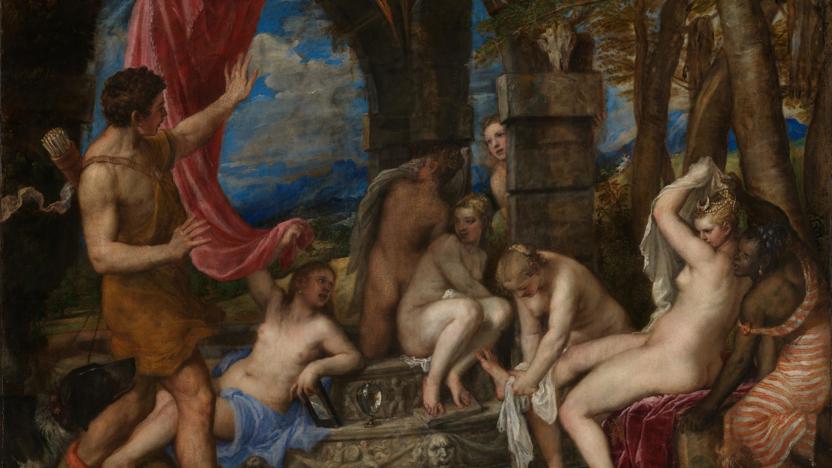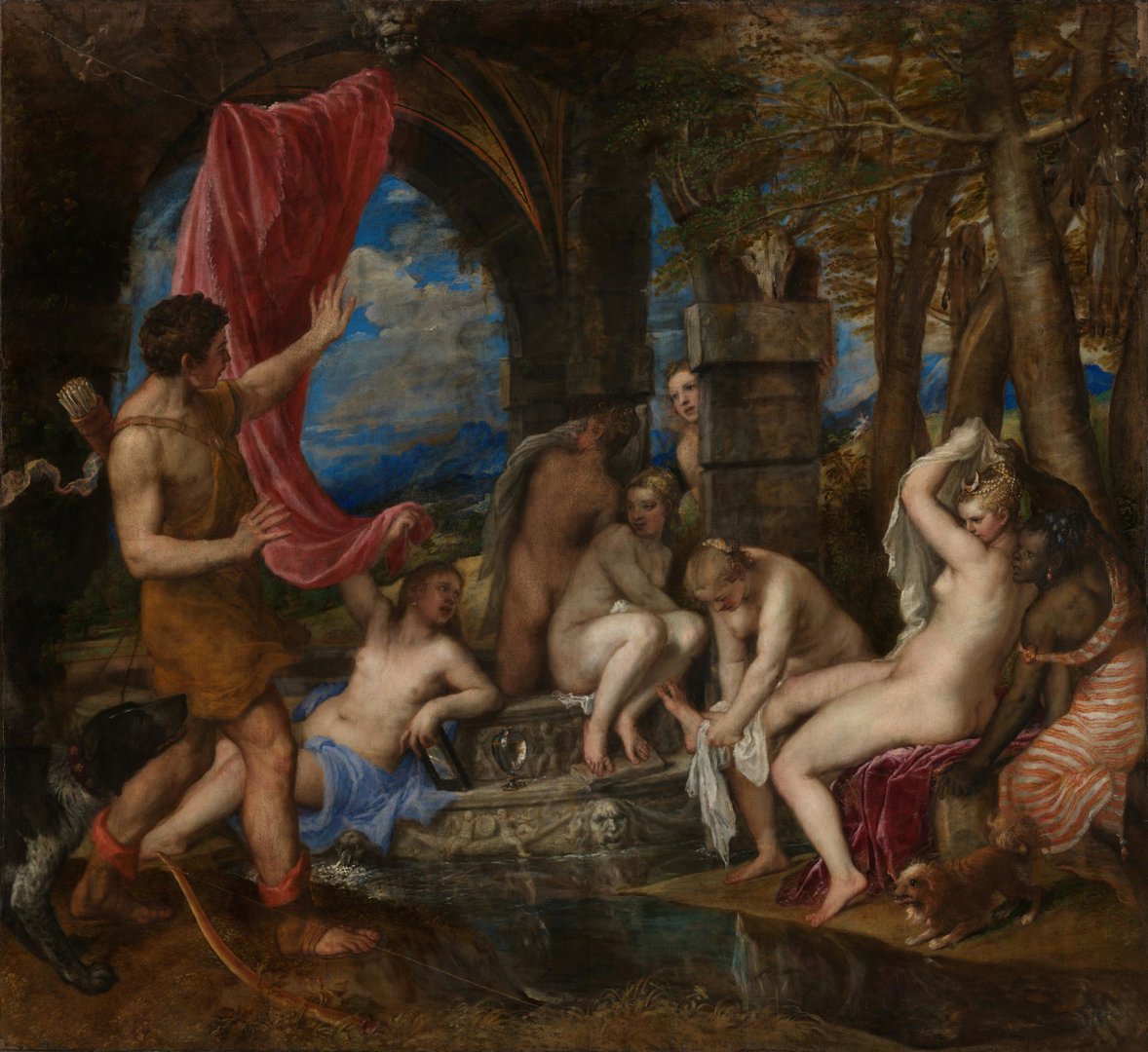Titian's 'Diana and Actaeon'
Audio description
This is a description of 'Diana and Actaeon', painted between 1556 and 1559 by the Venetian artist, Tiziano Vecellio – or Titian as he is better known. A work of oil on canvas, this is a large painting, over 2 metres wide and about 1.8 metres tall. It has a thick, gold frame decorated with flowing patterns and foliage. Painted for Philip II, the King of Spain, it was part of a series Titian called The Poesie, which depicts various scenes from Ovid’s Metamorphoses.
This painting, Diana and Actaeon, portrays seven almost naked women gathered around a fountain in a shallow pool, in a wooded clearing. They are enclosed by architectural ruins. A young man, a hunter, has stumbled upon them.
The colour pallet is defined by the greens and browns of the forest, the stone ruins, and highlighted by the blue sky in the background. Against this, the bright forms of the women, who are only slightly smaller than life-size, stand out.
Striding in from the left, the hunter wears a light brown, thigh-length tunic, his arms and legs bare. He has open-toed ankle boots with a reddish trim. He has short, curly, dark brown hair, and a quiver of arrows strapped behind his muscular shoulders. He has just pulled aside a hanging piece of red drapery, revealing the young women grouped in the centre and righthand side of the scene. The hunter recoils in surprise, arms lifted. He has dropped his bow which lies on the forest floor.
The seven women appear equally shocked. One is hiding behind a stone column, others hastily reaching for cloths to cover themselves. Three of them recline on the white-stone fountain, which is not flowing, but is partially sunken into the small stream which cuts along the bottom of the painting. The women are white and fair-haired, except for a black woman on the far right of the scene, the only one who has a cloth wrapped around her legs and hips. She appears to be assisting Diana to cover herself with a white veil. Diana sits on a red velvet cloth, another of the women drying one of her feet. Crowned with a braid of pearls running through her golden hair, and topped by a crescent-shaped tiara, Diana glares across the clearing, at the intrusive young man.
These two main characters, the crowned woman and the blundering hunter, are figures from Greco-Roman mythology. They would be best known to Titian through the epic poem, the Metamorphoses, written by the ancient Roman poet, Ovid. In Ovid’s version, Actaeon, a young hunter, has spent the morning hunting with his friends. He accidentally intrudes upon Diana, the chaste Roman goddess of the hunt, who had been bathing with her escort of nymphs. The myth goes on to tell how Diana splashes Actaeon with the water of the sacred spring, and transforms him into a stag. As he runs, Actaeon is hunted down by his own hounds, who tear him to pieces.
Titian has chosen to depict the crucial moment at which Actaeon inadvertently seals his fate, when he locks eyes with the furious Diana. Perched on a stone column behind the women, is the skull of a stag, signalling Acteon’s death. Another grim reminder of Actaeon’s ironic demise is his black and grey hunting dog at his heel, who peeks into the scene from the bottom left corner of the composition. This is balanced by another dog in the bottom right, a toy spaniel, crouching in fury at the intrusion.
Actaeon’s fate is illustrated in another, later work by Titian, 'The Death of Actaeon', which is also in the National Gallery’s collection, along with another painting, 'Diana and Callisto'.


